Hollywood vs. Marilyn Monroe
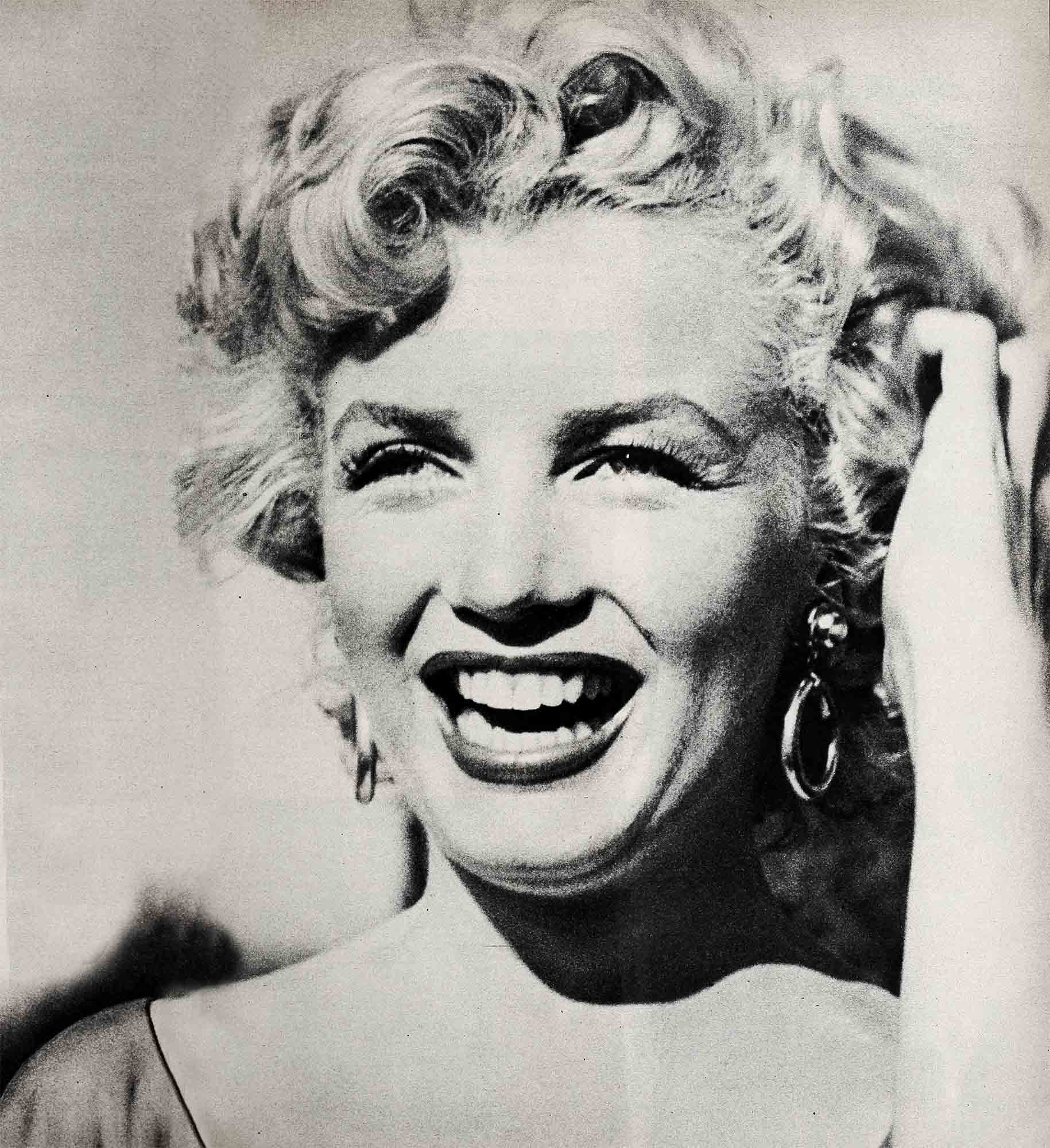
For years, Hollywood has been awaiting a Marilyn Monroe: the essence of sex, a personality so exciting that column after column of free publicity, photo after photo would be devoted to recording her latest sayings and doings. And when Marilyn finally, definitely arrived, what happened? At first, hats were thrown gleefully in the air, and then, in a sudden reversal, all the town’s heavy artillery was hauled out to assail her with a walloping barrage of criticism.
The battle really began with the Photoplay Gold Medal Awards dinner. Wearing a gold lamé dress of such intimate design that it had to be sewed on her, Marilyn walked up to receive her award—walked in the uninhibited manner that is uniquely Monroe. And the attack started, with Joan Crawford playing general. “Like a burlesque show,” said the dignified and distinguished-looking Miss Crawford. “Those. of us in the industry just shuddered. Apparently Miss Monroe is making the mistake of believing her publicity.”
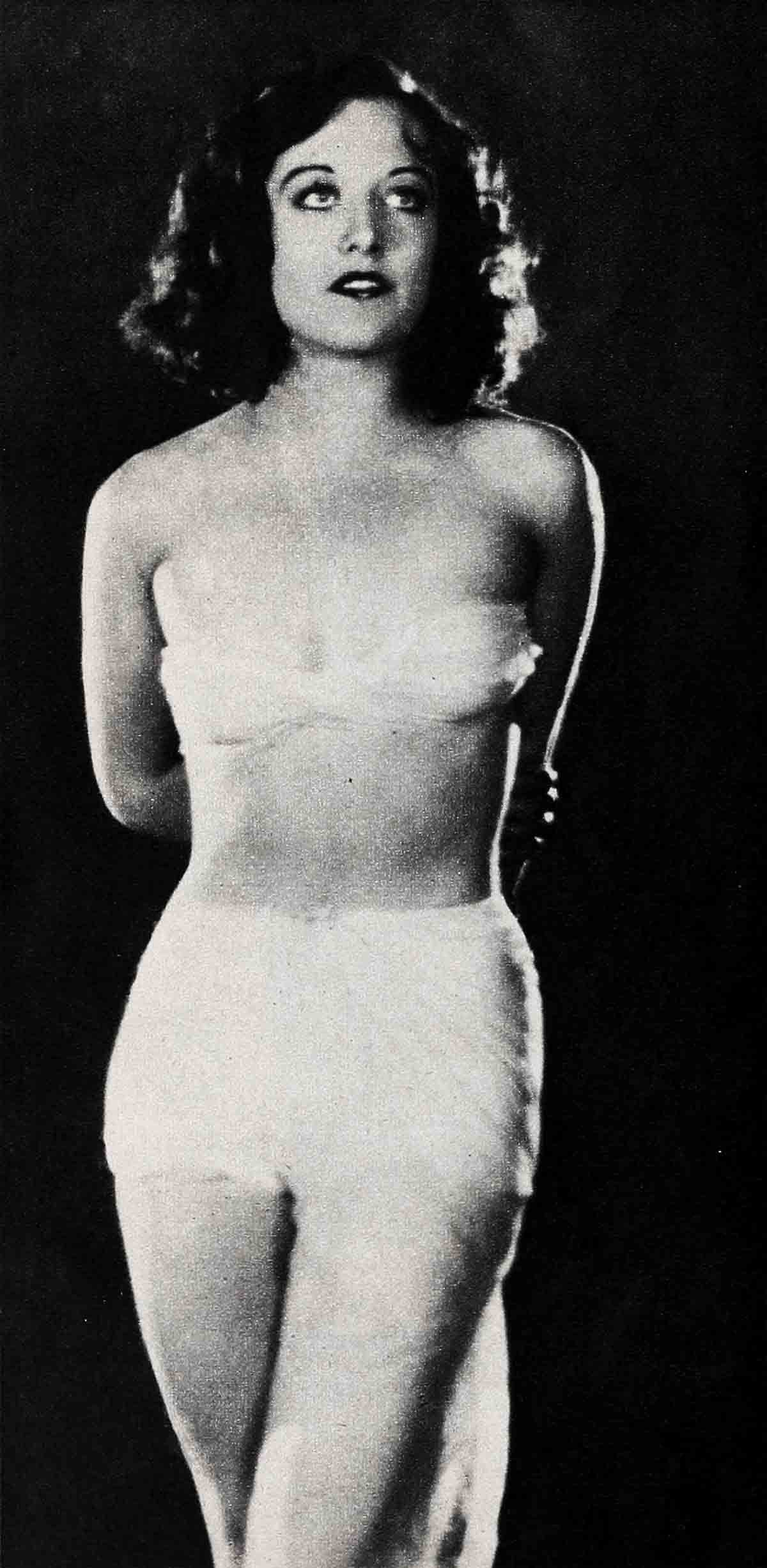
v
Others in the motion-picture business joined the assault. Writers and publicists agreed with Joan. The movie business, they said, should have outgrown such shenanigans.
The next day, worried Twentieth Century-Fox executives took an informal poll by phone to find whether their prize property had indeed endangered her boxoffice value. Her walk had aroused laughter. Was that good? Was that bad? Uncertain which way to jump, the executives decided to play ‘it safe, and Marilyn made her next important public appearance wearing a comparatively modest dress-with-jacket outfit that subdued her outstanding characteristics.
“Sex,” Joan had said, “plays a tremendously important part in every person’s life. People are interested in it, intrigued with it. But they don’t like to see it flaunted in their faces. . . . They don’t like to see it exploited . . .”
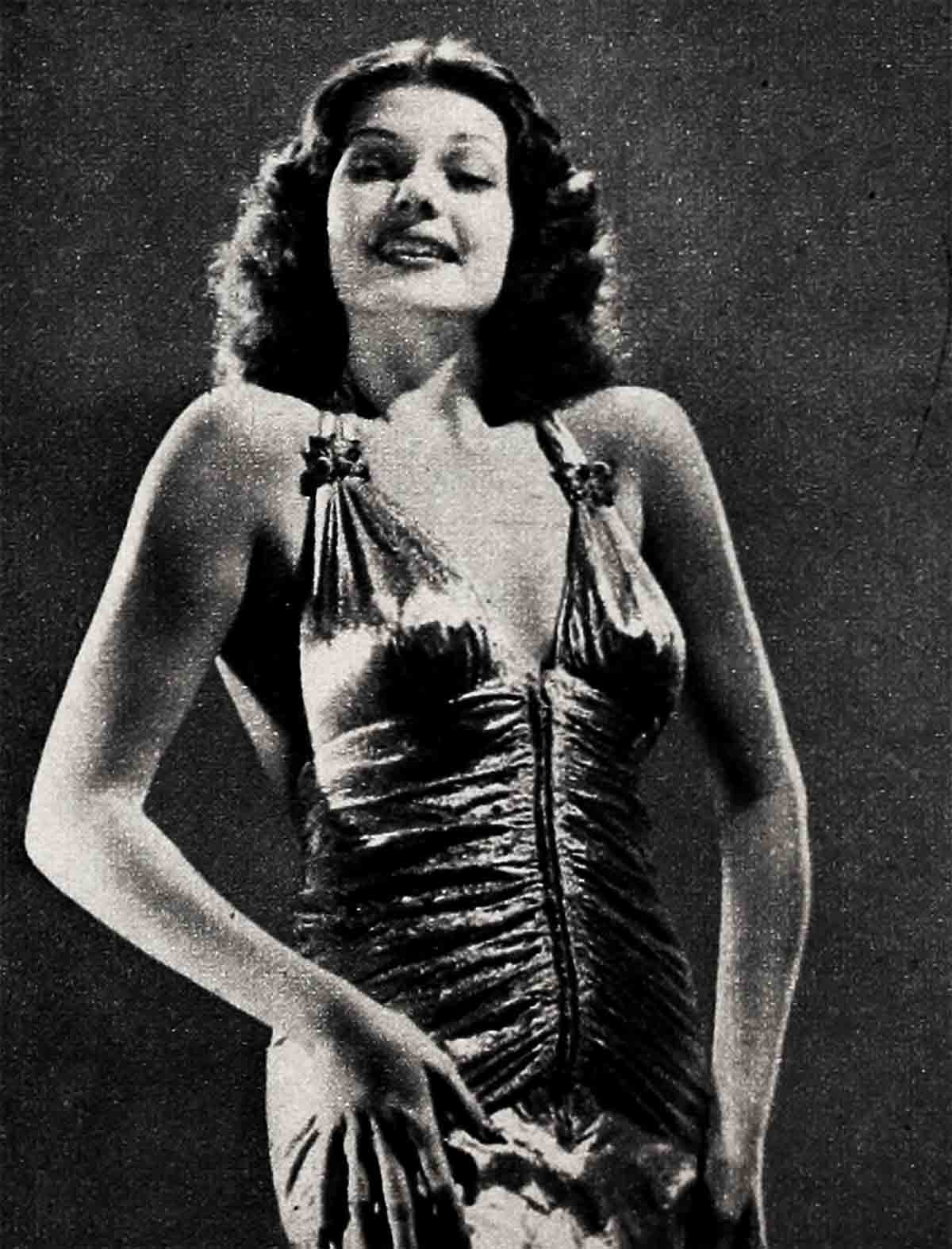
They don’t? Let’s see whether Hollywood was justified in the sudden caution that put Marilyn under wraps. Remember (as Joan and Hollywood didn’t) another young actress who once smashed into movies with tactics quite as reckless. This was a voluptuous beauty given to dancing the Charleston on table-tops in her movies—and to ardently living her role in her private life. Cast as a flaming flapper on the screen, she later admitted, “I did feel that I was that type of girl. Consciously or unconsciously, I dressed, talked and behaved just as such a girl would.”
According to her own description, this young actress ran with “the jazzy about-town crowd” in Hollywood. Her beaux were many; so were the daring quotes she offered to an eager press: “The wedding ring! That’s one thing I hope I’ll always be able to avoid. . . . I think one thing that makes for health in American girls is the small quantity of clothing.”
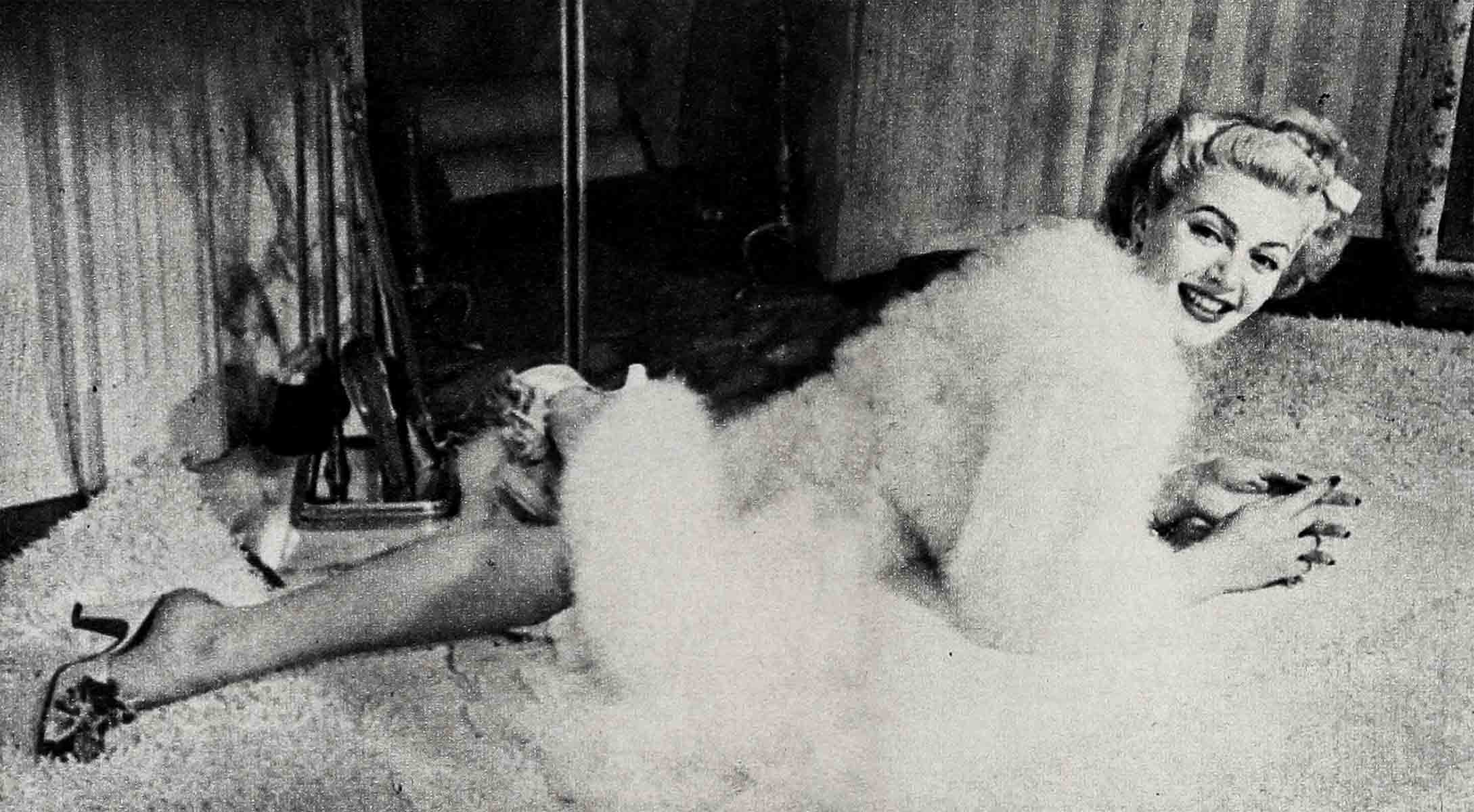
This was almost twenty-five years be- fore Marilyn made her declaration of independence from lingerie. Though it isn’t recorded that Marilyn’s predecessor posed for any calendars, she was willing to face the camera clad only in a tasteful arrangement of chiffon and grapes. Columnist Sidney Skolsky reported that she had in the privacy of her home a full-length portrait of herself wearing a long string of pearls. . . .
If the attack on Marilyn Monroe is justified, this earlier “hey-hey girl” with an “oo-la-la body” should have had a short career, alienating people with her flaunting of sex. Of course, the girl was Joan Crawford. And people—from studio crews to millions of fans—fell in love with her warm, outright vitality. In manner, clothes and diction, Joan has changed. She has been recognized as an actress; she has won an Oscar. But that was her start, the basis of her fan following.
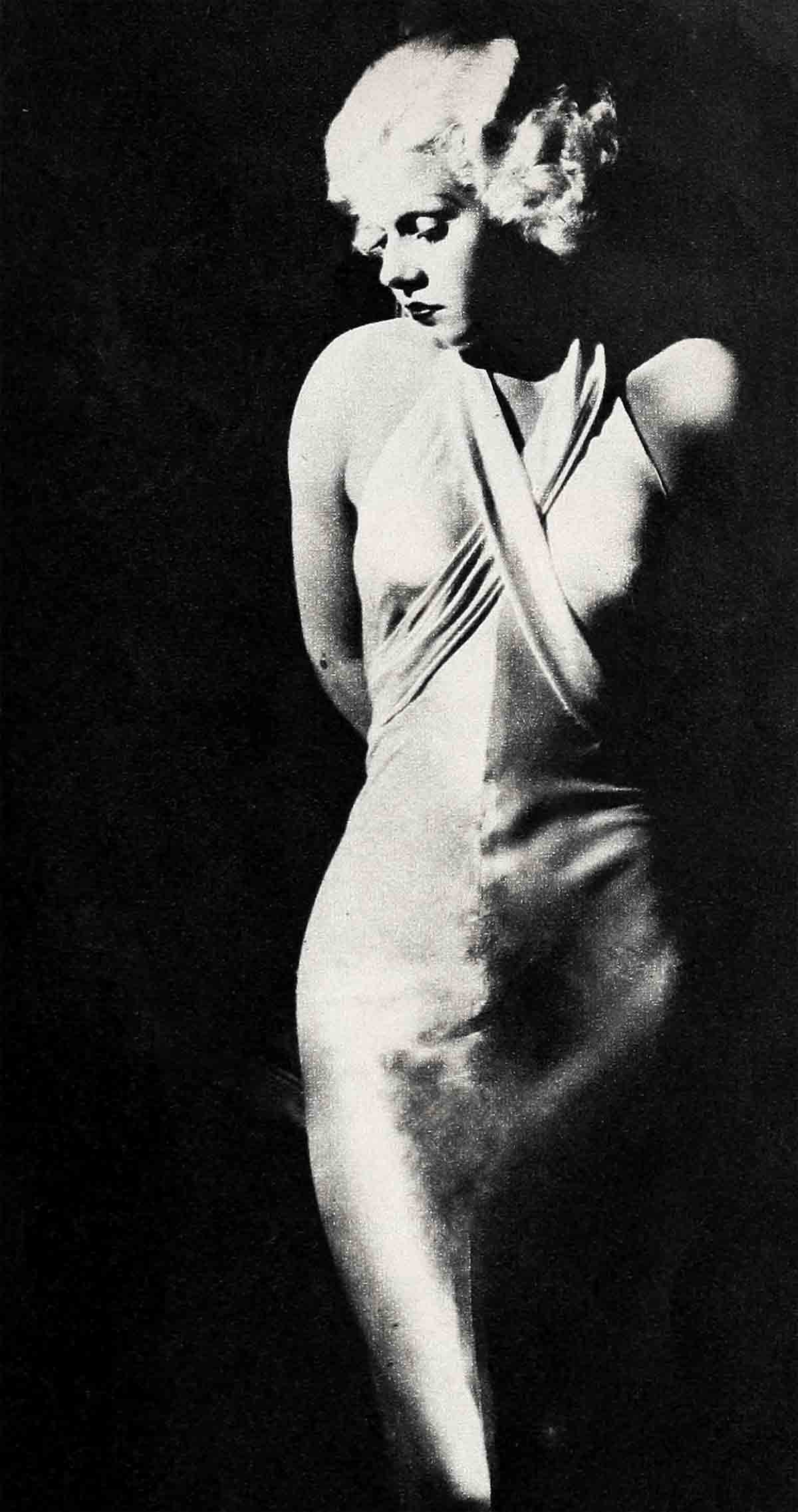
Even then, her specialty wasn’t a new tradition in Hollywood. With her first starring appearance, Joan was promptly dubbed “another Clara Bow.” The original Clara Bow, off the screen these many years, remains a movie legend, against which every sex-appeal queen since has been measured. Even more than Joan, perhaps, Clara personified the flapper of the roaring twenties, “joy-loving, excitement-seeking.” In one respect the bouncing little redhead didn’t quite meet the flapper ideas. Fashion in those days decreed that girls should be flat-chested and hipless, but it was pretty obvious that Clara had a very feminine shape under the shapeless shifts then in mode. Modern style allows curves, but Marilyn exceeds this allowance to the same degree.
Why does Hollywood pick on Marilyn? After all, sex was certainly not her invention
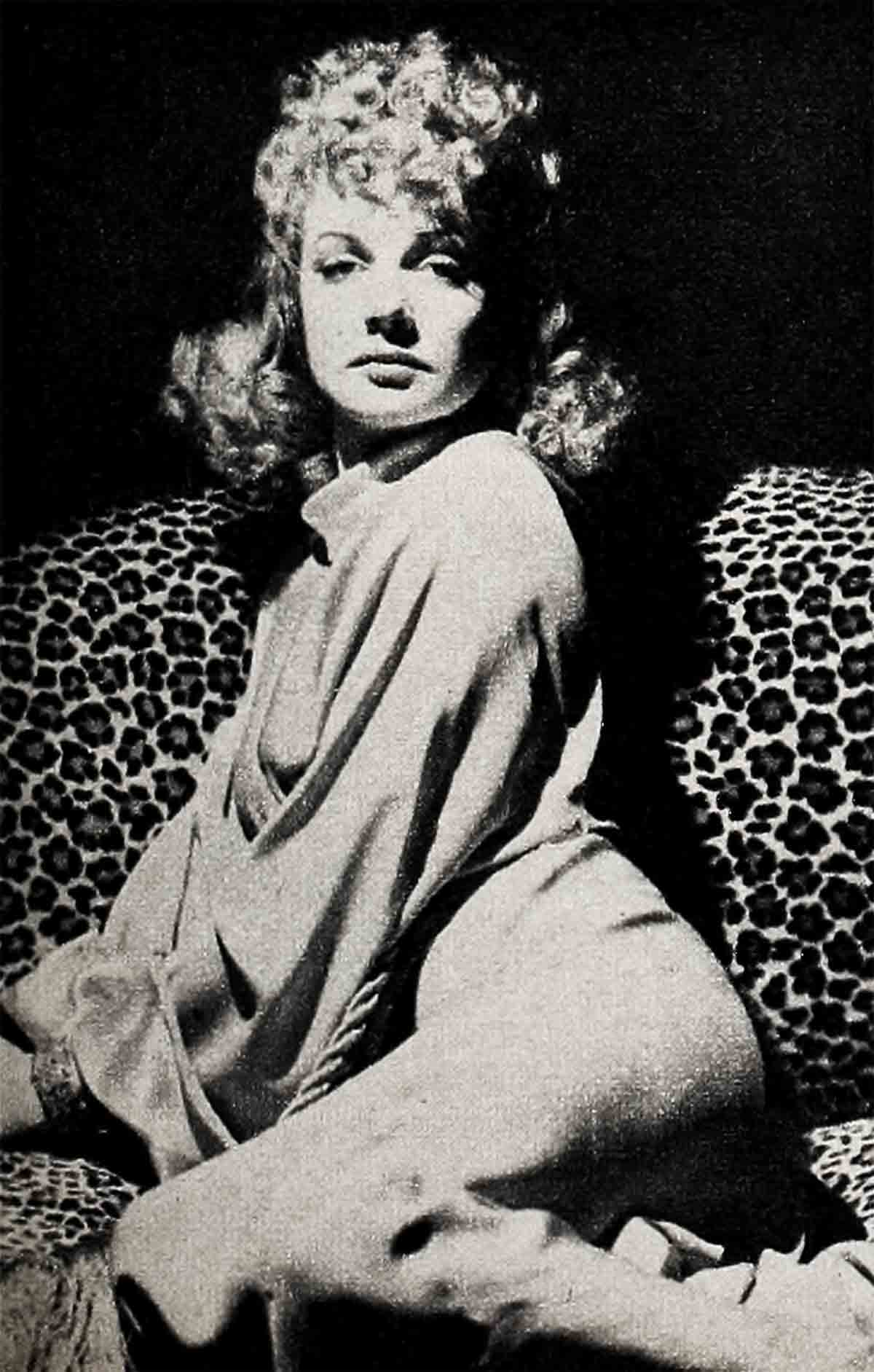
Already known as “The Brooklyn Bombshell,” Clara presently acquired a more famous title, awarded with great ceremony. Elinor Glyn, a majestic lady whose list of torrid best-selling novels included one succinctly titled “It,” proclaimed that Clara Bow was the “It Girl” to the life. There wasn’t much question what Madam Glyn meant by “It”—that same profitable quality that Marilyn is now flaunting. However, rio such elaborate stunts have been staged to call attention to Monroe.
Clara’s appeal was amply demonstrated in her personal life, too, with a series of headline romances: Gilbert Roland, Gary Cooper, Harry Richman, Robert Savage (a wealthy young man who tried to kill himself allegedly for love of the “It Girl”). So far, Marilyn’s achieved nothing in this department but a few stories about her friendship with Joe DiMaggio.
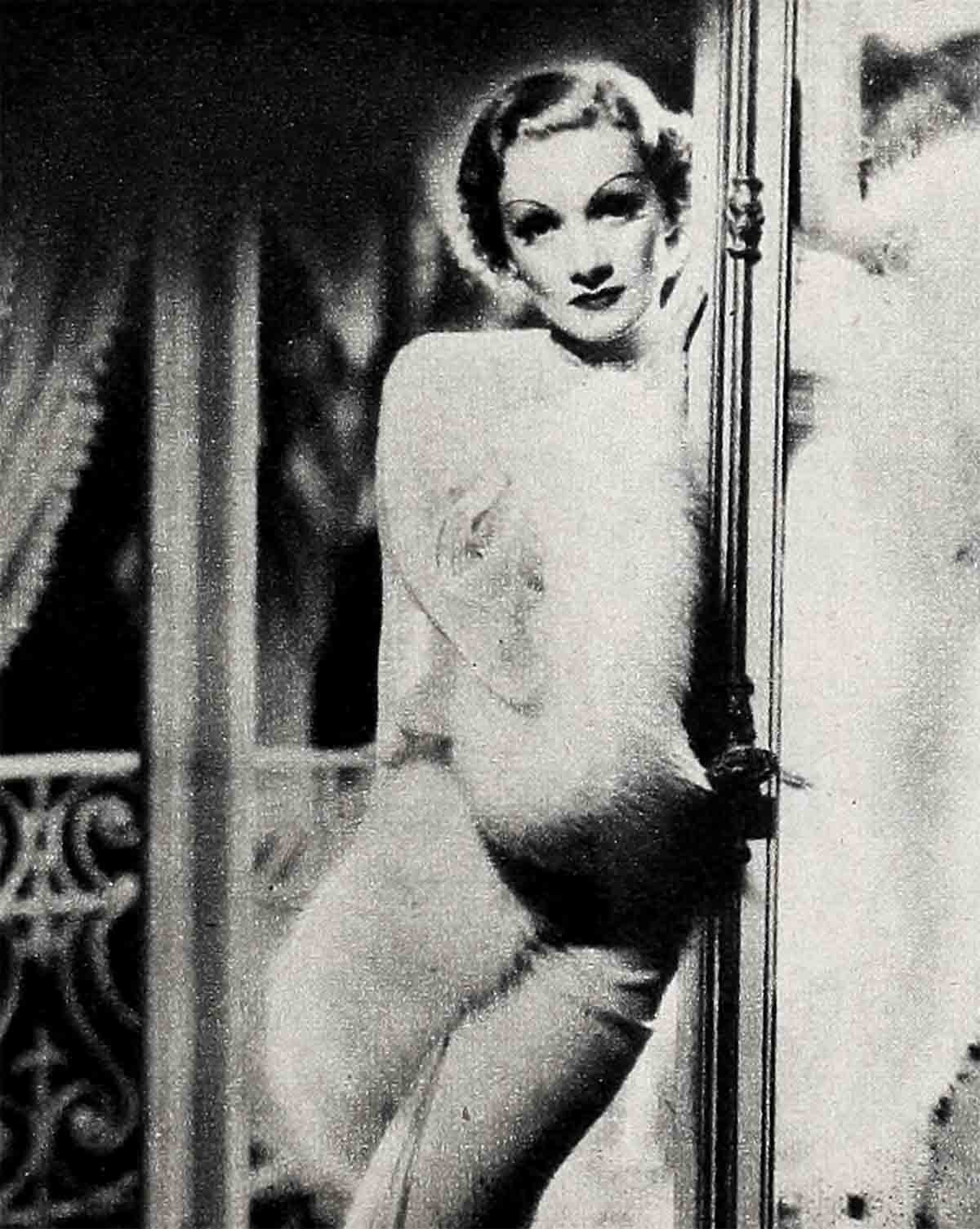
Scandal put a temporary halt to Clara’s career; her secretary-companion threatened to tell all about the star’s love-life and did come out with some rather startling tales. Hardly waiting to get public reaction or to find out whether the tales were true, Clara’s studio took her out of the film “City Streets,” substituting a stage newcomer named Sylvia Sidney. But Hollywood and the fans generally sympathized with Clara, considering her warm-hearted and over-generous.
As flappers and silent movies slipped into history together, along came an exciting new brand of sex appeal, imported from Europe. Marlene Dietrich had first been spotted singing in an obscure Berlin night club, in a costume that included “a very short little skirt and long black silk stockings held up by garters that showed.” For her first couple of years in Hollywood, she continued to be “Legs” Dietritch. Then, in a clever publicity move, she reversed the gag and began stepping out with her famous gams hidden beneath trousers.
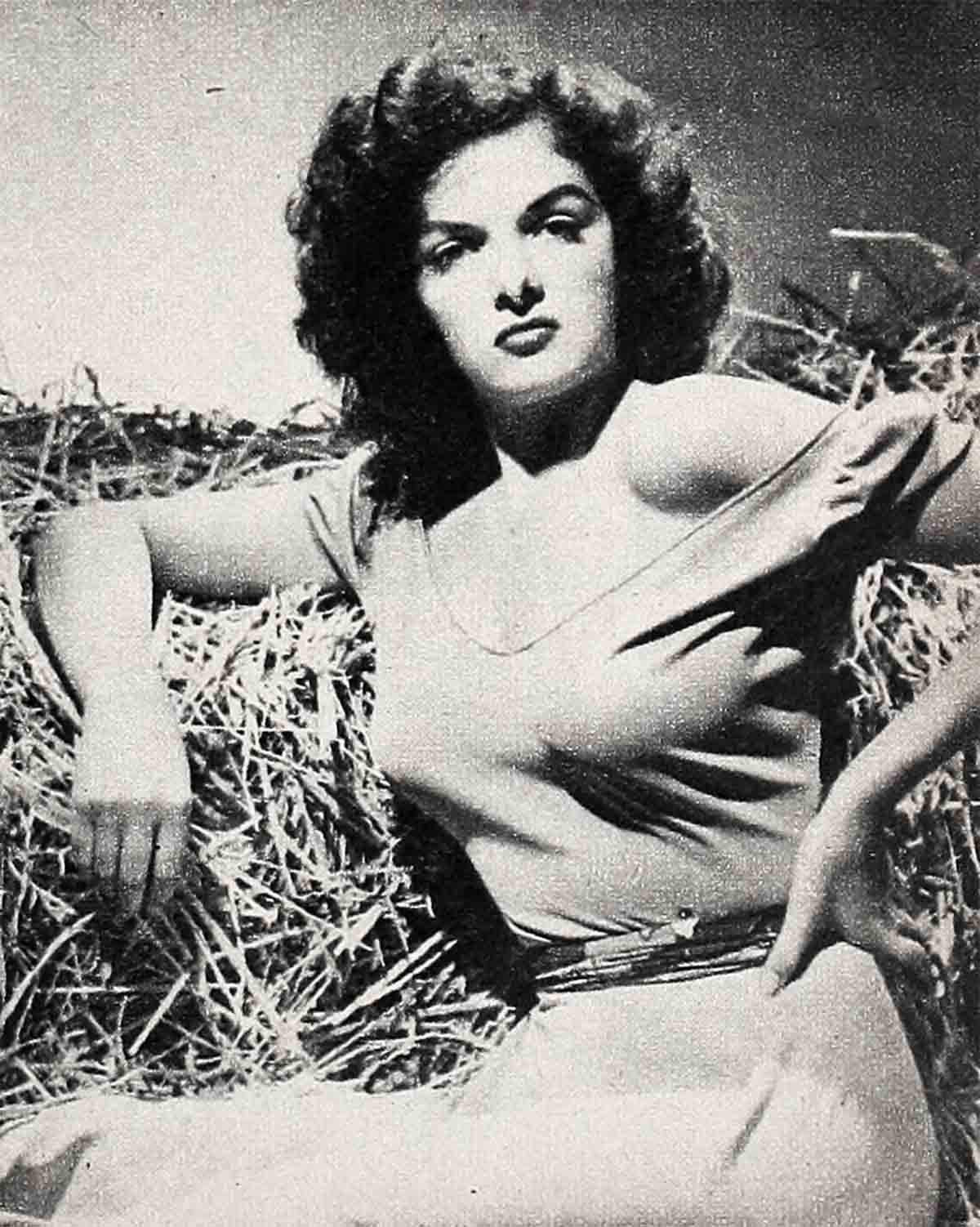
At that time, a lady definitely was not supposed to trot around in public in such male attire. But Marlene was unperturbed by all the furor. When she went on a European vacation, even Paris was shocked, threatening to turn the gendarmes on her. The Nazi government of her native Germany, which she had disavowed, issued virtuous denunciations of her behavior.
Marlene’s real motive was quite clear. “A man’s suit,” she purred, “makes me feel (and, I hope, look) more feminine than the most beautiful dress in the world!” Marilyn’s tight-fitting dresses are simply the approach direct, while Marlene just as deliberately called attention to her sex with clothes that contradicted it. And Marlene was equally frank about her intentions. “Sex,” she said, “is the dominating factor in our lives . . . Sex appeal is, I think . . . an enthusiasm, an eagerness for the chase, of the hunter for the hunted.”
After this highly efficient flaunting job, did outraged public opinion force Marlene into a quick fade-out? Not exactly. That was more than twenty years ago, but Grandma Dietrich can still steal the show whenever she feels like it.
Simultaneous with Dietrich’s rise was the appearance of a thoroughly American star. Jean Harlow’s role in “Hell’s Angels” was rather brief; though she later became an excellent comedienne, her acting in her debut was extremely awkward. But these minor matters were generally overlooked. Soon the whole country was talking about the scene in which Jean, already wearing a very revealing gown, murmured to the hero, “Would you excuse me while I slip into something more comfortable?”
The line aroused the same sort of response as Marilyn’s preambulations in “Niagara” (and at the Photoplay dinner): laughter that included a large amount of hearty appreciation. The publicity boys were quick to capitalize on Jean’s success, touting the “lusciously sexquisite” newcomer with such devices as a line of Harlow lingerie. She was sent on personal-appearance tours, usually going onstage in white satin gowns that showed her fans what they’d come to see. Within two months after the release of her first picture, she was listed seventeenth in a poll choosing the one hundred best-known people in the world. Further campaigns kept her in the public eye as “The Platinum Blonde” and “The Blonde Bombshell.”
There was criticism, of course. When Jean turned titian for “Red-Headed Woman,” one fan wrote: “Just plain common! This new red-headed hotcha girl is nothing but another carbon copy of Clara Bow.” A British fan defended her against the “on slaught,” announcing that England would be happy to welcome Jean.
Naturally, America did want her, whole- heartedly. Not all movie-goers made the mistake of confusing Jean herself with the man-eating roles she played. Upon the suicide of her husband, Paul Bern, she might have been threatened with the same sort of scandal that pursued Clara Bow. But sympathy was even stronger for Jean.
Far from being harmed by her early publicity. Jean’s career was at its heigh hen it was ended by her tragically early death. Say her name in Hollywood now, and there’s an outrush of affection for a girl who remains very much alive in the memories of her friends and co-workers.
Publicity that openly accented sex also gave Lana Turner her start. About all she had to do in “They Won’t Forget” was walk. She was seen in a front or profile view rather than from the rear, since she happened to be wearing a sweater. And as “The Sweater Girl” she became famous. posing for countless photos that emphasized her well-equipped chest. She was compared to Jean Harlow, to Clara Bow. Anita Loos, author of “Gentlemen Prefer Blondes” and therefore an authority on feminine appeal, stated that Lana, too, had “It.” Later, Lana was named “Miss Sex Appeal of 1938.”
Obligingly, she provided more publicity with her offscreen activities. Was she the most-dated girl in Hollywood? “I get around,” Lana said. Columnists scolded her for her excessive night-clubbing, warned her to behave herself, decided she was over-exploited. But the exploitation paid off. In the sixteen years since her “Sweater Girl” era, Lana has remained a top star, secure in the fans’ loyalty and the reporters’ interest even during interludes of retirement. Within the past year, she has won applause for straight acting ability in “The Bad and the Beautiful.”
Ann Sheridan had a similar send-off. She’d done nothing notable on the screen when, with suitable pomp, she was named “The Oomph Girl.” The Earl of Warwick, on the panel that awarded the title, gave this definition: “Oomph is a feminine desirability which can be observed with appreciation but cannot be discussed with respectability.”
In less than a year, “The Oomph Girl” had zoomed from thirty-fourth to third place on Warners’ fan-mail list, still with no important film work to her credit. But she’d turned out plenty of sultry portraits, with hair sliding over one eye, dress off one shoulder, lots of leg visible and statements like: “Men are wonderful things—I like men very much. In numbers.”
Eventually, there came a day when Annie grew heartily tired of her title and the build-up that went with it. But it had established her; it had identified her; and it carried her though until she had proved her other qualifications for stardom.
Betty Grable, on the other hand, has never been known to knock the tactics originally used to sell her to the public. Ask her whether it was that strong sexy buildup that put her on top of the glamour-girl (and boxoffice) heap, and you’ll get a straight answer: “Of course! What else? Remember back in the Civil War, or whenever it was, when Frank Powolny took that bathing-suit shot of me with my derriére in the forefront and my eyes glancing back over a provocative shoulder? That sexy shot did a whale of a job for me, and Id be the last to deny it!”
By the current cautious reckoning, such a blatantly sexy shot might have been good for a flash-in-the-pan success, never for a long career. Betty, as every fan knows, hit the top-ten boxoffice list as that photo was being pinned up in barracks all over the world, and she stayed among the top ten for a-decade. Later, her fans didn’t mind seeing “Gams” Grable politely turned into Mrs. Harry James.
Another pinup*queen of World War II, having acquired considerable dignity since then, might not be so eager to remember her start. As a newcomer, Rita Hayworth goons cheerfully in (and halfway out of) a $25,000 pearl dress and a series of less costly garments; she was photographed sitting on a bed, wearing a filmy black nightgown; and was soon dubbed “America’s Goddess of Love.” If this campaign wrecked Rita’s career, many a young newcomer would be delighted to have a similar wrecking job done on her own.
The most startling campaign of recent years (until Marilyn came along) was devoted to a beauty discovered by Howard Hughes, who had also introduced Jean Harlow. Photographer Tom Kelley and his wife, Natalie, sent Hughes some photos of a tall, sumptuously proportioned brunette who might suit the feminine lead in “The Outlaw.” (By remarkable coincidence, it was Kelly who shot a group of famous calendar pictures some years later.)
The brunette, Jane Russell, promptly chosen to star in “The Outlaw,” remained in the headlines for an amazing number of years on the strength of her publicity alone. And it was plenty strong. It had to be. On its first release in 1941, “The Outlaw” collided with severe censor trouble; it didn’t go into general release (in a somewhat expurgated edition) until 1949. In the interim, Jane Russell’s name became a synonym for the most conspicuous portion of her anatomy. And her movie’s advertising had almost as much trouble as the movie itself. In San Francisco, the police chief announced he’d received letters from parents, school officials and church organizations protesting a billboard that showed Jane reclining in the hay. Magazines refused to run ads that included the query: “How’d you like to tussle with Russell?”
Meantime, Jane good-humoredly went along with the gag. She made no complaint at the numberless cheesecake photos; she donned a tight-fitting black dress to play star guest at a male debut party thrown by a group of playful socialites in Boston. Once, she did try to stage a slight rebellion, as Ann Sheridan had. Jane wanted to establish herself as a singer. For one of her first night-club appearances, she put on a high-necked dress, only to encounter protests from the manager, whose customers (he said) were not coming to see Jane Russell in a high-necked dress.
Well, it can’t be said that Jane’s publicity has changed much. As recent a film as “His Kind of Woman” was plugged with billboards that were too much for the sensitive British authorities. At their command, retouching raised the level of Jane’s bodice six inches, and the Mitchum-Russell team, originally described as “The Hottest Combination Ever,” became in Britain “The Greatest Combination Ever.”
Yet Jane continues to be starred in highly successful pictures. Her domestic life, rather soft-pedaled at first, is now widely recognized in its true guise, unaffected by her publicity. But Mrs. Bob Waterfield, mother of two adopted children, a genuinely religious woman, still hasn’t balked at engaging in a verbal duel with Marilyn, strictly for the purpose of advertising “Gentlemen Prefer Blondes,” which teams the rival sex-appeal queens.
Let’s hope that Jane, off the record, found time during shooting to reassure Marilyn about the real long-range effects of an all-out-sexy publicity campaign. If not, perhaps Betty Grable, who co-stars with Marilyn in “How to Marry a Millionaire,” has comforted her.
From Joan to Jane, the record is pretty impressive. After all, what attribute first draws attention. to any woman, on or off the screen? Just as Joan once did, Marilyn displays her sex appeal frankly—never slyly. It’s foolish to try founding either a marriage or a movie career on sex attraction alone. But that’s a conventional beginning, always successful if a girl can follow it up with the more profound qualities that win the permanent affections of her guy or her fans.
THE END
It is a quote. PHOTOPLAY MAGAZINE JULY 1953


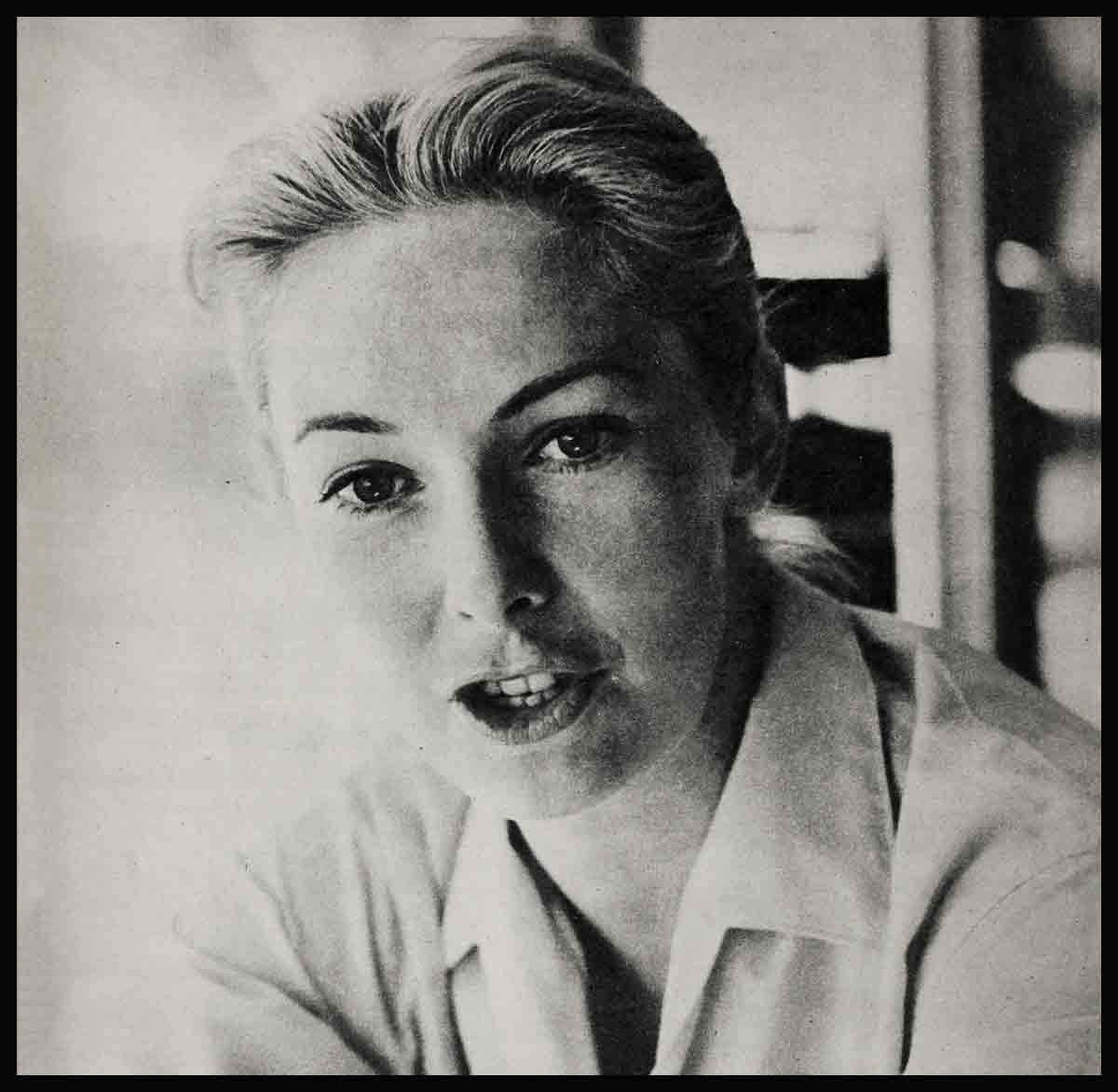

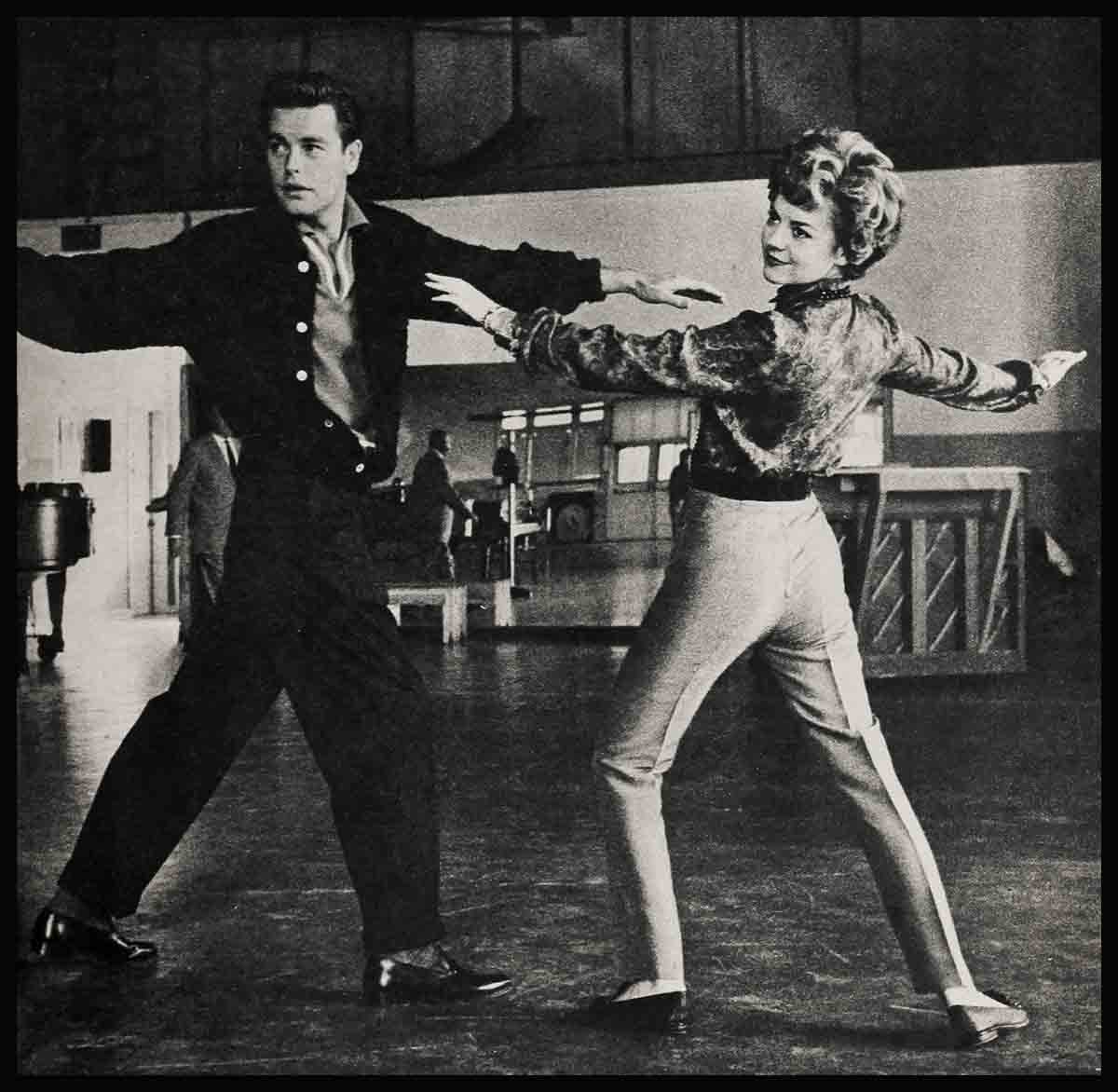
Hamishstrack
11 Mart 2023Tese are genuinely impressie ideas inn concerning blogging. You have touched some pleasant things here. Any way keep up writing.